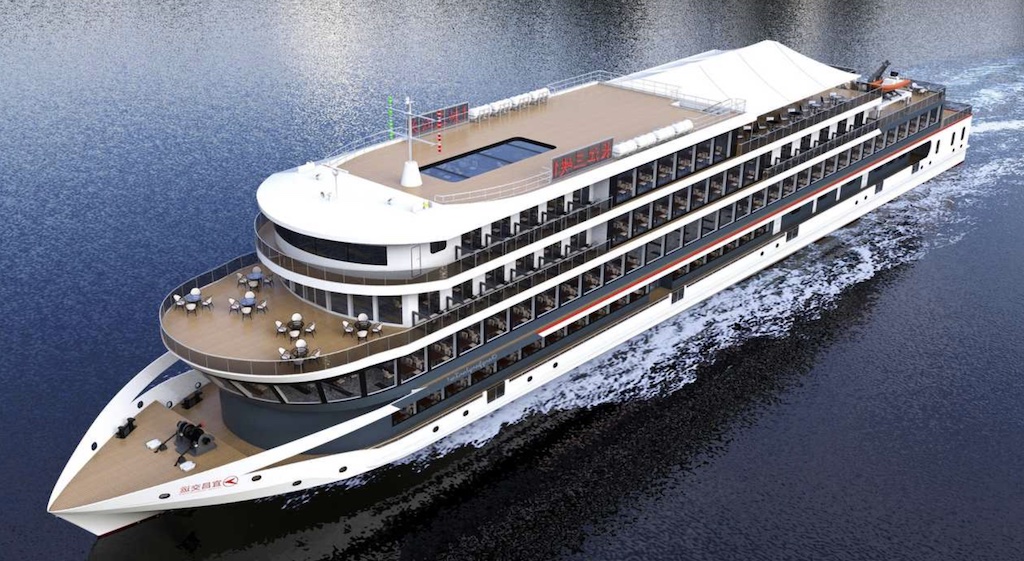Electric mobility is not exclusively reserved for the automotive world, as demonstrated by China with the presentation of the world’s largest electric cruise ship. It will begin operating at the end of the year, offering tours of the Yangtze River.
A country that is the world leader in the production of batteries could not pass up the idea of surprising the world by demonstrating, once again, its technological power by presenting a ship that will be propelled, without emitting any harmful substance into the environment, by 10,000 cells of battery produced by CATL.

With this cruise, the emission of more than 17 tons of NOx each year will be avoided and left no CO2 emissions behind during the ship’s operation.
The battery of this giant reaches the capacity of 7.5 MWh with which the Yangtze River Three Gorges 1, as the ship has been called, became the largest zero-emission cruise ship in the world.
Cruises are a problem due to their enormous emissions; despite the new propulsion groups of the last ships of Princess Cruises or other companies, each floating city is a source of emissions comparable, sometimes, with all the city vehicles.
To combat this problem, China has presented this new ship compatible with the environment that does not present the issue of emissions and dangerous parts for public health.
The cruise is designed for cruises on the impressive Yangtze River, famous for its Three Gragantas, the Qutang Gorge, or the ancient city of Fengjie. The new ship will be operated by Yichang Transportation, which currently owns a fleet of five ships and a newly built cruise terminal.
Wuxi Saisiyi Electric Technology has manufactured the ship. It has been financed, in part, with public funds from the Ministry of Transportation together with the Ministry of Industry and Information Technology of China.
The ship will displace 17 tons and will be the largest battery-powered passenger ship surpassing the Ellen electric ferry, which has a capacity of 4.3 megawatt-hours. The Ellen operates on an established route connecting the ports of Soby and Fynshav in southern Denmark.
The record for the most powerful 100% electric ship in the world today is the Yara Birkeland, an autonomous battery-powered vessel built for Norwegian fertilizer manufacturer Yara. The boat has a 7.0 megawatt-hour battery.
The new Chinese cruiser will beat the Yara Birkeland record, thanks to a 7.5 MWh battery, equivalent to about 100 Model 3 Long Range electric cars, to give us an idea of this ship’s capacity.
The cells manufactured by CATL are cobalt-free LFP (lithium iron phosphate) type, similar to those used by Tesla at its factory in China. The 10,000 cells are separated into four separate compartments, with an additional battery backup system for emergency use.
The recharging of the cruise ship will have two options, one of high voltage for when it is necessary to recover autonomy quickly. The slower option allows it to recover a load during periods of rest for the boat.
At the moment, the data on the speed of recharging the cruiser’s battery or the type of installation to proceed to dump kilowatts to the heart of this new boat is unknown.

